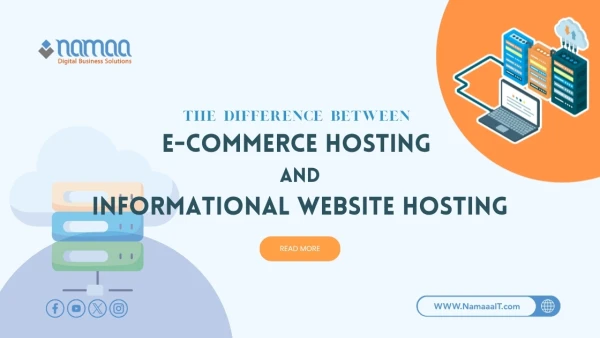In a world experiencing unprecedented digital acceleration, e-commerce has become a fundamental path for growth and expansion for medium and large companies. However, entering this market isn't just about launching an online store — it requires strategic planning that aligns with company goals, resources, and customer needs. This guide provides practical and thoughtful steps to help e-commerce managers build a robust, scalable store that generates real return on investment. From defining a clear vision to selecting the right platform, you'll find here a clear roadmap for establishing a successful and sustainable digital presence.
Why Do Companies Need to Strategically Plan a Professional E-Commerce Store?
In today’s digital age, an online presence is no longer a luxury or secondary option — it’s a strategic necessity for survival and growth. Planning a professional e-commerce store goes beyond just creating a digital storefront; it’s about building a comprehensive sales channel that can reach far wider customer segments than traditional retail ever could.
Companies that invest in thorough planning ensure they lay a strong foundation to deliver exceptional user experiences that reflect their brand identity and values, while building trust with customers. This planning involves deep market understanding, competitor analysis, and identifying strengths and weaknesses to shape a digital marketing strategy that attracts visitors and converts them into loyal customers.
Additionally, professional planning enhances operational efficiency by integrating the store with inventory, shipping, and customer service systems, reducing human error and associated costs. Neglecting this vital stage may result in a poorly performing store that fails to meet business goals — wasting resources and damaging brand reputation. Strategic planning, therefore, is not an extra cost but a smart investment that ensures long-term success in a rapidly growing e-commerce landscape.
Key Steps to Planning an E-Commerce Store for Medium and Large Companies
Due to the scale and complexity of their operations, medium and large companies need a thorough and structured approach when building or developing their e-commerce store. This journey begins with defining clear strategic objectives aligned with the overall vision of the company.
This is followed by deep market research to understand industry dynamics, consumer trends, and competitor performance — identifying strengths, weaknesses, and available opportunities. The next step is to accurately define the target audience and create detailed customer personas to understand their needs, preferences, and buying behavior.
Based on this, a comprehensive content and digital marketing strategy is developed — including the right channels to reach the audience and the type of content to offer. A crucial step is selecting the right e-commerce platform that offers scalability, security, and flexibility, with smooth integration with existing company systems such as ERP and CRM.
The user experience (UX) and user interface (UI) design should ensure easy navigation and attractive presentation, focusing on an ideal customer journey. Equally important is planning logistics: inventory management, shipping options, return policies, and choosing secure and diverse payment gateways. Finally, a launch plan should be in place, including key performance indicators (KPIs) to measure success and a strategy for continuous improvement based on data and analytics.
Choosing the Right Platform for a Professional E-Commerce Store
Selecting an e-commerce platform is a highly strategic decision. It forms the technical backbone of the entire store and directly affects performance, scalability, user experience, and long-term operational costs. When evaluating platforms, companies should consider several key factors:
- Scalability: The platform must handle business growth in terms of product volume, traffic, and transactions without compromising performance.
- Built-in Features: Does the platform offer essential tools for managing products, orders, customers, and inventory? Does it support advanced features like affiliate marketing, loyalty programs, personalized recommendations, and SEO tools?
- Customization and Flexibility: To what extent can the store’s design and functionality be tailored to match brand identity and unique business needs? Open-source platforms (like Magento or WooCommerce) offer high flexibility but require technical expertise, while SaaS platforms (like Shopify or BigCommerce) are easier to manage but offer limited customization. Platforms like PolarisMAX combine both approaches.
- Integration: The platform must integrate seamlessly with the company’s existing systems — ERP, CRM, payment gateways, shipping providers, and marketing tools.
- Security: High security standards are essential to protect customer data and financial transactions, complying with protocols like PCI DSS.
- Total Cost of Ownership (TCO): Consider not only subscription fees, but also development, maintenance, updates, add-ons, and support costs.
- Ease of Use and Support: Especially important if the internal team lacks advanced technical skills.
The Role of Data Analysis in E-Commerce Store Planning
Data analysis is the backbone of successful e-commerce planning, offering insights that empower companies to make evidence-based decisions rather than rely on assumptions. The role of data analysis begins even before the store is launched. Market data helps estimate demand for products or services, identify interested demographic segments, analyze competitors' strategies, and understand pricing dynamics.
Keyword research helps identify the search terms potential customers use, guiding SEO and content creation efforts. Once the store is live, data analysis becomes even more critical. Tools like Google Analytics can track traffic sources, user behavior (pages visited, time spent, navigation paths), bounce rates, and conversion rates at each sales funnel stage.
This data reveals the strengths and weaknesses in store design and UX, identifying friction points that prevent purchases. Sales data analysis highlights bestsellers, underperforming items needing more promotion, average order values, and seasonal buying patterns.
Customer data (demographics, purchase history, preferences) enables personalized offers and recommendations, improves targeted marketing, and builds stronger relationships. Marketing campaign analytics help measure effectiveness and determine which channels yield the best return on investment. In short, data analysis acts as a compass guiding the planning and continuous improvement of the e-commerce store to meet customer needs and business goals efficiently.
read more: Data-Driven Product Launch Plan for E-commerce Stores
How to Ensure the Sustainability and Growth of Your E-Commerce Store as Your Company Expands
Ensuring the sustainability and evolution of an e-commerce store to keep pace with company growth and market changes requires a long-term vision and proactive methodology beyond routine maintenance:
- The store’s technical infrastructure — including the platform and hosting — must be flexibly scalable. This means handling traffic spikes, product volume increases, and transaction loads without degrading performance or UX. Cloud-based solutions often provide this needed flexibility.
- Embracing a culture of continuous improvement is crucial. Regularly reviewing store performance using analytics and KPIs, collecting customer feedback, and conducting A/B tests (e.g., page designs, CTAs, checkout flow) helps identify what works best.
- The store must adapt to emerging tech trends and changing consumer behaviors — such as integrating AI for personalized recommendations, chatbots for customer service, mobile UX enhancements, and supporting new payment methods.
- Ongoing investment in cybersecurity is essential to protect customer data and preserve brand reputation, with regular protocol updates and employee training.
- Content and marketing strategies should be dynamic and refreshed regularly, offering valuable content aligned with evolving audience interests and emerging channels.
- Teams managing the store should receive ongoing training in new tools, technologies, and e-commerce best practices.
- Flexibility in the business model is also essential — allowing for product category expansion, entry into new geographical markets, or adopting innovative models (like subscriptions) in line with overall growth strategy.
Frequently Asked Questions
What are the most important legal and regulatory considerations when launching an e-commerce store?
Comply with consumer protection laws, provide clear privacy policies and terms, secure payment data (PCI DSS), register legally, and manage taxes and return policies.
How can an online store ethically and effectively collect and use customer data?
Collect data with customer consent, secure it, and use it to personalize shopping experiences, make recommendations, enhance marketing, and improve product offerings.
What are the essential strategies to market a newly launched online store with a limited budget?
Focus on SEO, social media marketing, content marketing (blogs), collaborate with micro-influencers, and run targeted email campaigns.
How can online stores address shipping and logistics challenges, especially during expansion?
Choose reliable shipping partners, integrate tracking systems, and use advanced inventory tools or third-party fulfillment services (3PL) when scaling.
What’s the importance of product reviews and how can you encourage and manage them?
Reviews build trust and influence purchase decisions. Encourage them with follow-ups and small incentives. Manage feedback — especially negative — professionally and promptly.
Summary:
E-commerce is booming, expected to represent over 20% of global retail sales within a few years. Professional store planning is no longer optional — it’s a competitive necessity.
Careful planning, including platform selection and excellent UX design, can increase conversion rates by up to 200%. Over 70% of shoppers abandon carts due to complicated checkouts or poor UX.
Smart data analysis directs store strategies. Over 70% of consumers expect personalized experiences, and companies using data effectively grow revenue 10–15% faster than competitors.
Sustainability requires adapting to trends like mobile commerce (over 60% of online store visits) and continuous security updates to counter rising threats targeting millions of users.
Aligning the store’s objectives with the company’s overall strategy, while paying attention to legal aspects and customer reviews (trusted by more than 85% of shoppers when making a purchase decision), ensures balanced growth and long-term reliability.

.webp)







